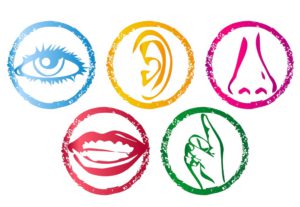- You are here:
- Home »
- Blog »
- Exploring Your Internal Map Of Reality (Series) »
- Exploring Your Internal Map Of Reality Part 8: Strategies (Conclusion)
Exploring Your Internal Map Of Reality Part 8: Strategies (Conclusion)
You might look at Strategies from the previous articles (starting here) and wonder: there’s so much to know and remember how can I possibly learn it all?
 The answer to this is quite simple: take it in chunks. I deliberately broke this article up into several parts to help you do this.
The answer to this is quite simple: take it in chunks. I deliberately broke this article up into several parts to help you do this.
In this final article on Strategies, we’ll look at how to figure out your strategies, then recap on how to use them to your best advantage.
How to figure out a strategy
Let’s pick an example of a strategy: say for you to be motivated to do something.
Read the instructions below then close your eyes and relax a bit.
1 – Think of a time in the past when you were totally motivated.
2 – How did you know that you were motivated?
– What did you see?
– What did you hear?
– What did you say to yourself?
– Was it some other sensation such as touch or smell?
3 – What was the very first thing that caused you to be totally motivated? This will be the trigger.
4 – Once you have the trigger, what happened next?
Again, was it something you saw, you felt, you heard, etc.?
And what happened next (was it something you saw, you felt, you heard, etc.?)
Continue to ask yourself the questions above (was it something you saw, you felt, you heard, etc.?) until the final outcome is achieved (motivation). This will establish the sequence of events that led to that outcome.
There may be more than 2 or 3 steps until you get to the final outcome.
Write this sequence down so you can see it on paper. You might like to use the following abbreviations:
 Modalities
Modalities
V: Visual (what you see/saw)
K: Kinaesthetic (feel/felt)
A: Auditory (hearing/heard)
AD: Auditory Digital (internal dialogue)
O: Olfactory – smell
G: Gustatory – taste
Internal/External
e: external – outside your body
i: internal – inside your body
Remembered/Constructed
r: Remembered
c: Constructed (as in painting, writing or composing something)
For instance one strategy may be listed as:
Ve, Ad, Vic, K
Visual External ➡️Auditory Digital ➡️ Visual Internal Constructed ➡️Kinaesthetic (feeling)
In other words, you saw something (outside of you), then you said something to yourself. You then created a picture in your mind of something and got a feeling as a result.
For every action you do there will be a sequence of events (strategy) that led to this outcome. If this is not a desired outcome, but you find yourself doing it over and over again, consider changing the steps to get a different, more desired outcome.
 For instance if you saw something that always generates fear (eg fear of spiders), run through the strategy in your head and play around with the modalities and submodalities.
For instance if you saw something that always generates fear (eg fear of spiders), run through the strategy in your head and play around with the modalities and submodalities.
Make the picture small or large, associated or dissociated, focused or defocused. For internal dialogue, change what you say to yourself. For sounds, make them softer and less distinct.
You may have a strategy that does not work the way you want it to. To fix it, consider all the tips above as well as the previous parts of this article.
Remember, a strategy is simply a series of internal representations (in particular, modalities and submodalities) that lead to an outcome – usually a feeling or a behaviour.
Changing the sequence or any individual part of the sequence can often lead to another outcome, which can be desired or undesired. It can also result in no outcome at all!
With strategies, becoming aware of what you are doing is the first step towards changing the outcome. The steps above assist you to do this.
However, you do need to become aware of what you are doing at any one time to be able to make a positive change.
The best way to become more aware is to take up meditation. If you would like to find out how to meditate 8 times faster than Buddhist monks, please visit this web site for a free e-book and sample Holosync meditation session.
